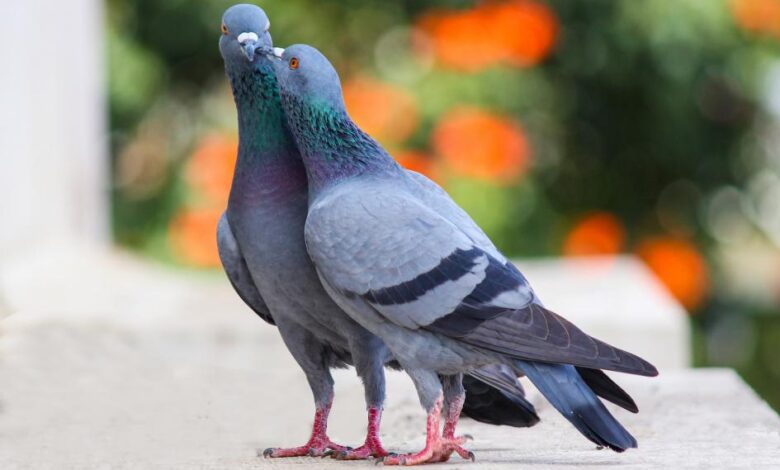
9 ways to protect your bird from illnesses
1. Good hygiene – regularly clean the bird cage and the appliances in it. The cleaning must be accomplished minimum twice a week .
2. We mustn’t let our birds have contacts with wild or free – living birds, who are the main carriers of diseases and infections .

3. Do not put the bird cage exposed to draughts – the birds can catch a cold , and they should be exposed to the sun no more than 1 – 2 hours , because they can get overheated and can suffer from hypothermia .
4. If you have other pet animals – a dog , a cat, first get sure that they are not aggressive towards the birds and only then you can leave them in the same room together.
5. Examine the bird cage for protruding parts and objects that can hurt the birds .
6. A very important factor for the good health of the birds is the proper and balanced feeding . Except for grain mixture, they should get enough quantity of fruit and vegetables, from which they will supply themselves with necessary vitamins .
7. Also, with great importance for the health of birds is the proper supply with minerals . You can buy them from the zoo in combined form.

8. It is also necessary that your birds get small stones and sand in a separate container , which contributes to the good digestion and food – assimilation.
9. Overfeeding the birds with proteins of animal origin is very dangerous for them and it can cause podagra and lead to abnormal appetite .
Bird Flu and You: How Will The Flu Affect You?
Flu is a common disease nowadays, with most people having developed the antibodies to fight against the disease. So the mention of “flu” doesn’t really create any alarm. However, say “bird flu” and there’s likely to be a pandemonium.
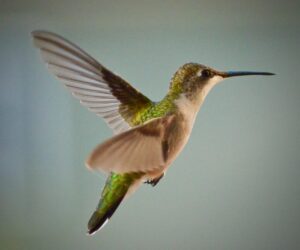
Bird flu, or avian influenza, is a highly pathogenic virus of 15 types. The virus spreads to poultry through direct or close contact with nasal secretions, saliva and feces of infected birds.
What is alarming about this virus is that it has the ability to rapidly mutate into different forms that can affect human beings.
Believed to be worse than the SARS outbreak, the bird flu outbreak brought millions of dead birds worldwide and at least 70 people dead in Asia.
From a not-so-harmful H5N2 virus strain, it can mutate into a killer virus with a low spread rate once the virus is transmitted to a bird.
The virus has an incubation period of six to nine months before it becomes a full-blown, deadly pathogen. A bird that has been infected with the virus but has survived the disease continues to carry the virus in its body for more than week.
When this happens, the bird passes on the disease to other birds that come in close contact with its secretions, saliva and feces.
Bird flu and ordinary human flu have the almost the same symptoms. These symptoms are fever, muscle pains and cough.
This is the reason that a person who is actually infected with bird flu may be mistakenly diagnosed as simply having ordinary flu.
However, bird flu symptoms can escalate into several life-threatening conditions. Some of these life-threatening conditions are lung inflammation, eye infections and pneumonia.
Because of the severity of symptoms of bird flu infection, the World Health Organization (WHO) is in the midst of a widespread effort to prevent the virus from infecting humans, particularly those whose who depend on poultry and livestock as their livelihood.
Bird flu virus and its subtypes can easily mutate into other forms. For example, the virus that was transferred from one animal to another is the H5N2 strain.
However, the virus mutated into the H5N1 strain, which has been responsible for the death of at least 50 people.
It is a very surprising discovery how these viruses can mutate itself from pathogens that can harm humans as it had started with birds.
In Asia, the countries plagued by the avian flu are Vietnam, Japan, Cambodia, South Korea, China, Indonesia, Laos, Thailand, Kazakhstan, Malaysia, Mongolia, Russia, Thailand. In Europe, Turkey, Romania and Croatia are the hardest hit by the disease.
WHO has issued a warning to travelers to these countries to avoid going to live poultry markets, getting close contact to any farms and having direct exposure to feathers, feces or droppings,
eggs and poultry meat products. Travelers need to know that most contamination occurs during the slaughtering of poultry and being in direct contact with fecal matter.
No travel advisory has been issued restricting anyone from going to countries with the H5N2 strain. Travelers coming from afflicted countries are also not being screened.
However, precautionary measures are in place, particularly in the media. Information is being disseminated in order to make people aware of the bird flu, its effects and what to do to avoid getting infected.
To date, no vaccines have been developed or available to fight the illness. However, anti-viral medicines are being used as alternatives in helping alleviate the severity of symptoms on those infected.
While M2 inhibitors would be helpful, the body tends to develop resistance to those, diminishing the efficiency and effectivity of inhibitors.
The bird flu problem is both a government and global issue. Governments are in charge of making reliable declarations, initiating studies and putting objective measures in place. There is no reason to panic if the virus has not reached your area yet.
The best thing you can do is to take practical steps in taking of your body and helping it build resistance to any kind of illnesses.
How The Bird Flu Virus Lives And Spreads
Bird flu is a serious and dangerous virus. With so much controversy over this deadly disease, it is a good idea to have some kind of idea what you are up against.
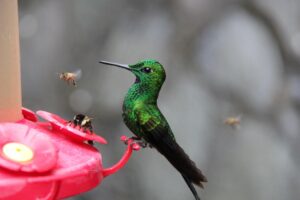
Knowing how the virus lives and spreads makes it easier to protect yourself from infection.
First, it should be understood that bird flu is much like the other strains of influenza. Like the flu that goes around every year, bird flu is transmitted from the exchange of the virus through droplets of saliva, mucus, or other excretions.
However, bird flu is not transmitted from human contact, but through the handling or ingestion of infected poultry.
It is more common for people to be impacted by bird flu that handle birds for agricultural purposes or eat infected fowl that is not properly handled.
The virus lives within poultry and survives in the feces of the animal for several days, if not weeks. Therefore, regular contact with birds,
especially in dense populations, increases the possibility of contracting the disease. To avoid infection, limit contact with potentially dangerous poultry.
It should also be clear that this particular virus was not always a threat to humans. Prior to 1997, there were no known cases of H5N1, the deadly strain of bird flu, infecting humans.
Since the virus first came to pass in the early 1900’s, it has mutated and transformed into a different form. This mutation is vital to the ongoing vitality of influenza and is the primary source for the concern surrounding H5N1.
The virus continually manipulates itself to bypass treatment techniques and survive in varying environments.
Once the virus is transmitted to a person, it is incredibly interesting what takes place. There are two factors within the immune system that contribute to the devastation of the virus.
First, the virus causes an exaggerated response in cytokines, hormones that regulate the immune system. This increase makes the immune system unstable and actually has a negative effect on the body itself, as well as making fighting infection difficult.
Secondly, other aspects of the immune system are suppressed, allowing the virus to run rampant within the body.
Since the virus is not bacterial in nature, antibiotics are ineffective in treating the disease. In many illnesses, antibiotics are administered,
which suppress the immune system and fight the infection; however, this is not an option due to the nature of bird flu; therefore, the most effective treatment is prevention.
Bird Flu True to Form – a Pandemic Scenario
Lee tried to stifle a sneeze but couldn’t. Invisible to the naked eye, a cloud of almost five thousand virus-filled droplets launched into the air at some 150 km/ hour or roughly 100 mph. Some passengers in the wide-body Airbus frowned.

The Hong Kong to London flight was long and no one wanted to catch a cold.
Lee planned to fill every waking moment of his stay in London.
A concert at the Millennium Dome, dinners at some of the finest hotels, shopping in crowded malls – “What a chance,” Lee thought. All he had to concentrate on was a few hours in front of the International Board.
It was his job to present sales trends in China to the bosses who were also winging it towards Heathrow, one of the world’s busiest airports. “The global executives will get only good news from me,” figured Lee. “Pity I don’t feel better …”
The Diagnosis
Lee was exhausted. He had a cough, scratchy throat, runny nose and muscle aches. A fever started but it wasn’t until Lee began having difficulties breathing that he decided to get help.
Doctors huddled in subdued discussion. Experts were rushed in. It was finally determined that Lee’s body was fighting strenuously against two viruses. Lee had caught a highly infectious Influenza A virus – a flu bug.
However, at much the same time he had also picked up a second virus called H5N1. The two viruses had mixed their genes and formed a hybrid.
Since this was now a radically new pathogen, Lee had no immunity to it.
Lee was not the only one in this fight. Infected passengers from Lee’s plane from Hong Kong had connecting flights to major cities in most continents.
The global executives Lee had addressed at the office had also flown home diseased. Sadly, some of the medical staff where Lee was diagnosed had
also caught it not to mention the crowds Lee had interacted with at concerts, restaurants and on shopping sprees. The so-called Bird Flu or Avian Influenza had indeed spread its wings. It was the start of the first flu pandemic of the 21st century.
The News
Had Lee or any of the others known in time, they would have taken anti-viral drugs hoping to block or at least slow down the replication of the virus.
At least the severity of some symptoms might have been eased not to mention a reduction in the duration of sickness. But time had run out – anti-viral medication needed to be taken within 48 hours of the first stages of the disease.
It wasn’t long before Lee was put on a respirator in quarantine. It also wasn’t long before the media found out Lee had Bird Flu. The public became nervous.
The number of flu patients – real or imaginary – multiplied dramatically but nurses and hospital staff were strangely missing … using overdue holiday time or just not showing up for work at all.
It was announced that schools, restaurants, and non-essential businesses would be closed. No deadline was given – no one knew for sure how long the measures would have to be in place.
The Public Announcement
Wisely, the public was advised to stock up on food and water. Newspapers advised people to stock up on toothpaste, toilet paper and treasure (cash).
People were told to shop at off-peak hours and public transport was ordered to run 24 hours per day. But despite warnings to the contrary, doctor’s offices, hospitals and clinics were overrun. Faces masked in paper waited for hours in front of pharmacies in hope of getting relief.
Despite clear instructions from health officials, panic broke out as folk finally fathomed that at best only one third of the population had access to anti-viral drugs. In rural areas and smaller towns, there wasn’t any chance at all.
The Short-term Havoc
Rumors and half-truths began to circulate causing public outcry and protests. Because the protests only helped spread the flu, quarantines were set in place.
The public was told to stay at home indefinitely. Vibrant cities screeched to a halt as public transport shut down. Streets stank as garbage piled up. Shops were looted and in some cases those caught coughing were stoned.
Safety services (fire, police, ambulance) were disrupted, fires burned out of control. Cross-border travel was curtailed killing tourism and all international sports events were cancelled.
Food imports were banned creating shortages of meat, vegetables and wheat. Folk with chronic medical illnesses couldn’t get their medications.
Soap and disinfectants – perhaps the simplest and most effective fight against the spread of disease – were in short supply; no one had thought to stock-pile soap.
The Controversy
Local governments and health organizations began to squabble over who had the power to do what.
The question was of legalities: who would control distribution of anti-viral drugs and who would receive those drugs? Army barracks received attention but prisoners were ignored.
Families with pets were labeled as ‘higher risk’ groups but no-one knew if these families should receive more help or less.
As in-fighting became more severe, decision processing became more difficult. Who should give the daily press briefings?
Who would organize mass cremation? Who would facilitate conferences for global medical meetings? The list grew rapidly.
The Waves
The first wave of the pandemic was over in three months time but not the shock. Bacterial disease such as cholera multiplied rapidly with catastrophic results across Africa and Asia.
The longer-term, global recession began with the realization that supply-lines, manufacturing and food-production chains were desperately weakened through labor loss.
Medical facilities were terribly understaffed. As usual, the poor had little chance of aid at all. And then came the second wave of Avian flu. It took over a year before the waves of sickness and death became controllable.
Lee actually survived it all. Although he “started” the pandemic, he also helped “end” it. Doctors used his blood to find the initial vaccine.
Since Lee was also now immune, he not only volunteered to help where he could and also founded the World Association of Sensible Hygiene (WASH).
More importantly, Lee and others like him helped disrupted societies regain their faith and hope and love. Since this was pandemic number 11 in the last 300 years, history had taught that it was inevitable that individuals and communities and countries would bounce back fairly quickly.
But a bitter question remained. Would Lee and the rest of the world be better prepared for the next pandemic? Lee wondered that too as he bordered the wide-body Airbus destined for Mexico City.
bird disease 2022,bird feeder disease 2022,How to protect animals from extinction,bird diseases,How can we protect animals,9 ways to protect your bird from illnesses
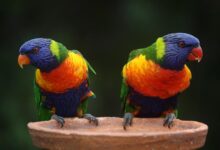
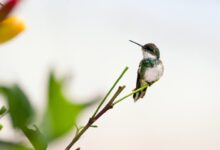

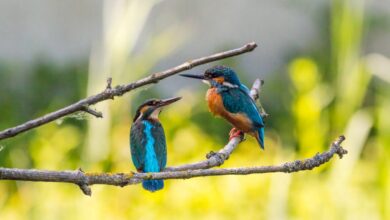
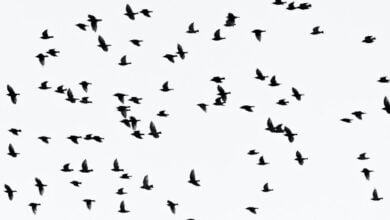
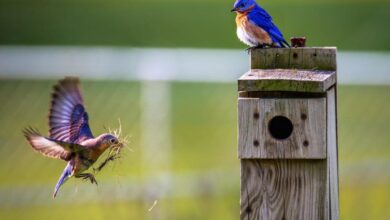
Your point of view caught my eye and was very interesting. Thanks. I have a question for you.